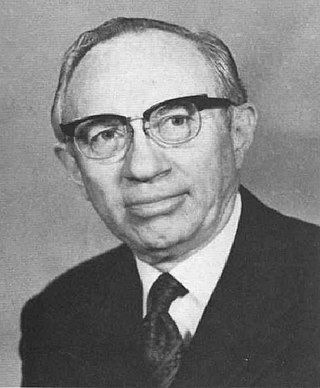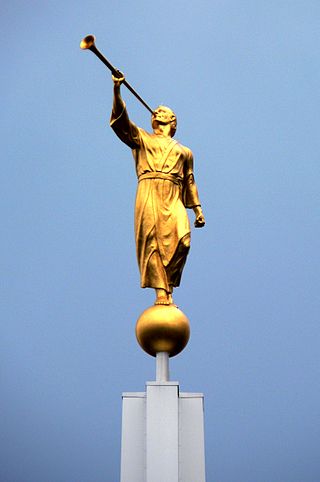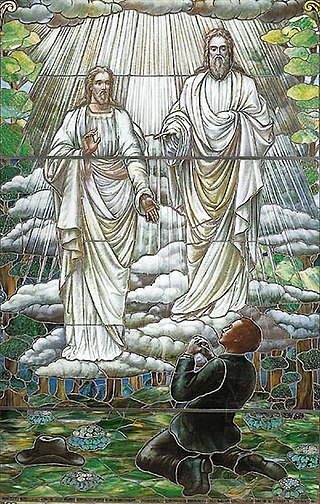
Mormons are a religious and cultural group related to Mormonism, the principal branch of the Latter Day Saint movement started by Joseph Smith in upstate New York during the 1820s. After Smith's death in 1844, the movement split into several groups following different leaders; the majority followed Brigham Young, while smaller groups followed Joseph Smith III, Sidney Rigdon, and James Strang. Most of these smaller groups eventually merged into the Community of Christ, and the term Mormon typically refers to members of the Church of Jesus Christ of Latter-day Saints, as today, this branch is far larger than all the others combined. People who identify as Mormons may also be independently religious, secular, and non-practicing or belong to other denominations. Since 2018, the LDS Church has emphasized a desire for its members be referred to as "members of The Church of Jesus Christ of Latter-day Saints", or more simply as "Latter-day Saints".

"The Family: A Proclamation to the World" is a 1995 statement issued by the Church of Jesus Christ of Latter-day Saints which defined the official position of the church on family, marriage, gender roles, and human sexuality. It was first announced by church president Gordon B. Hinckley.

Gordon Bitner Hinckley was an American religious leader and author who served as the 15th president of the Church of Jesus Christ of Latter-day Saints from March 1995 until his death in January 2008 at age 97. Considered a prophet, seer, and revelator by church members, Hinckley was the oldest person to preside over the church in its history until Russell M. Nelson surpassed his age in 2022.

The Relief Society is a philanthropic and educational women's organization of the Church of Jesus Christ of Latter-day Saints. It was founded in 1842 in Nauvoo, Illinois, United States, and has more than 7 million members in over 188 countries and territories. The Relief Society is often referred to by the church and others as "one of the oldest and largest women's organizations in the world."

The Church of Christ was the original name of the Latter Day Saint church founded by Joseph Smith. Organized informally in 1829 in upstate New York and then formally on April 6, 1830, it was the first organization to implement the principles found in Smith's newly published Book of Mormon, and thus its establishment represents the formal beginning of the Latter Day Saint movement. Later names for this organization included the Church of the Latter Day Saints, the Church of Jesus Christ, the Church of God, the Church of Christ of Latter Day Saints, and the Church of Jesus Christ of Latter Day Saints.
In the Church of Jesus Christ of Latter-day Saints, the Priesthood Correlation Program began in 1908 as a program to reform the instruction manuals and curriculum of the different organizations of the church. Its scope quickly widened, and Correlation came to affect almost every aspect of the church, including doctrines, organizations, finances, and ordinances. A significant consequence was to centralize decision-making power in the priesthood, particularly the Quorum of the 12 Apostles. More recently, the function of the correlation department has shifted to planning and approving church publications and curriculum and keeping unorthodox information, doctrines, and other undesired concepts from being introduced or revived.
Fast Sunday is a Sunday set aside by the Church of Jesus Christ of Latter-day Saints for fasting by its members. On Fast Sunday, a fast and testimony meeting is held by local congregations of the Church of Jesus Christ of Latter-day Saints.

Symbolism in the Church of Jesus Christ of Latter-day Saints is the process whereby objects or actions have been invested with an inner meaning expressing church ideas. The Church of Jesus Christ of Latter-day Saints and its membership have adopted a number of symbols that differ from those typically used in Christianity.
For members of the Church of Jesus Christ of Latter-day Saints, prayer is a means of communicating with God. Such communication is considered to be two-way, with the praying individual both expressing thoughts to God and receiving revelation, or communication from God, in return. As such, individuals who pray privately often include time to listen and ponder, during or after a prayer is uttered. Communication from God is received through the Holy Ghost, which speaks to the mind and heart of an individual. Prayer is one of the central teachings of the church, and adherents believe that they are commanded to pray often. The LDS Church teaches that humankind has been commanded to pray since its first generation. There are no restrictions as to who can pray, and the LDS Church teaches that all should pray and that God hears and listens to all prayers. Members are taught to begin to pray from a young age, and young children are sometimes asked to offer public prayers. Individuals who are not members of the LDS Church are also encouraged to pray both publicly and privately.

The basic beliefs and traditions of the Church of Jesus Christ of Latter-day Saints have a cultural impact that distinguishes church members, practices and activities. The culture is geographically concentrated in the Mormon Corridor in the United States, and is present to a lesser extent in many places of the world where Latter-day Saints live.
Worship services of the Church of Jesus Christ of Latter-day Saints include weekly services, held in meetinghouses on Sundays, in geographically based religious units. Once per month, this weekly service is a fast and testimony meeting. Twice each year, the LDS Church holds a worldwide general conference. LDS Church adherents also worship in temples, which are open only to members in good standing.
Sunday School is an organization of the Church of Jesus Christ of Latter-day Saints. All members of the church and any interested nonmembers, age 11 and older, are encouraged to participate in Sunday School.

The Church of Jesus Christ of Latter-day Saints focuses its doctrine and teaching on Jesus Christ; that he was the Son of God, born of Mary, lived a perfect life, performed miracles, bled from every pore in the Garden of Gethsemane, died on the cross, rose on the third day, appeared again to his disciples, and now resides, authoritatively, on the right hand side of God. In brief, some beliefs are in common with Catholics, Orthodox and Protestant traditions. However, teachings of the LDS Church differ significantly in other ways and encompass a broad set of doctrines, so that the above-mentioned denominations usually place the LDS Church outside the bounds of orthodox Christian teaching as summarized in the Nicene Creed.

The Church of Jesus Christ of Latter-day Saints was introduced to Ghana, West Africa, in 1962. It was officially organized in 1978, following announcement of the revelation on priesthood. As of 2022, the LDS Church reported 101,924 members in 353 congregations in Ghana, making it the second largest body of LDS Church members in Africa, behind Nigeria. In 2021, Ghana ranked as having the third most LDS Church members per capita in Africa, behind Cape Verde and Sierra Leone.
"The Living Christ: The Testimony of the Apostles" is a 2000 restatement of doctrine of the Church of Jesus Christ of Latter-day Saints.

The Church of Jesus Christ of Latter-day Saints in Ecuador refers to the Church of Jesus Christ of Latter-day Saints and its members in Ecuador. The first missionaries arrived on October 31, 1965. Since then, the LDS Church in Ecuador has grown to more than 250,000 members in more than 300 congregations. Ecuador ranks as having the 5th most members of the LDS Church in South America and 9th worldwide

The Church of Jesus Christ of Latter-day Saints in the Philippines refers to the organization and its members in the Philippines.

The Church of Jesus Christ of Latter-day Saints in Zimbabwe refers to the Church of Jesus Christ of Latter-day Saints and its members in Zimbabwe. In 1975, there were 689 members in Zimbabwe. In 2022, there were 38,289 members in 91 congregations, in 8 stakes.
Members of The Church of Jesus Christ of Latter-day Saints have participated in wars throughout the twentieth century, including World Wars I and II. LDS members are encouraged to be active participants in their community, and the church has supported its members serving in the armed forces, both in the United States and in other countries around the world.

The Church of Jesus Christ of Latter-day Saints in Kiribati refers to the Church of Jesus Christ of Latter-day Saints and its members in Kiribati. In 1976 the first branch was organized in Tarawa. As at the 2020 Census, there were 6,720 people declaring as LDS members. According to LDS church, as of year-end 2022, there were 22,210 members in 43 congregations, making it the largest body of LDS Church members in Micronesia. Kiribati also has the most LDS Church members per capita in Micronesia, and the third most members per capita of any country in the world, behind Tonga and Samoa.













